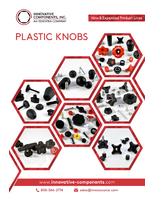NEMA commends FERC on demand response compensation ruling.
Press Release Summary:
NEMA commends Federal Energy Regulatory Commission for a decision that will improve the reliability and efficiency of the electric grid. In its final rule, FERC has allowed locational marginal prices (LMP) to be paid to demand response (DR) resources in organized wholesale energy markets. This means that electricity customers can enter into a voluntary agreement to be compensated to reduce usage when utility transmits a DR signal.
Original Press Release:
NEMA Commends FERC on Demand Response Compensation Ruling
ROSSLYN, Va., -The National Electrical Manufacturers Association (NEMA) commends the Federal Energy Regulatory Commission (FERC) for a recent decision that will improve the reliability and efficiency of the electric grid.
In its final rule, FERC has allowed locational marginal price (LMP) to be paid to demand response (DR) resources in organized wholesale energy markets. This means that electricity customers can enter into a voluntary agreement to be compensated to reduce usage when a utility transmits a DR signal.
"FERC's decision will unleash technologies that provide the grid with new efficient ways to manage its loads," said Kyle Pitsor, NEMA Vice President of Government Relations. "It will increase competition, allow new market entrants, and drive down costs for ratepayers. This policy is critical to the development of a smarter grid."
LMP, the same market rate paid to generation resources, will be paid to DR technologies in situations when it meets a cost-effectiveness threshold. This threshold will consider DR's impact on remaining loads to prevent ratepayers who are not engaged in DR from having to incur a greater cost per unit.
Cost-effectiveness thresholds are to be determined by regional transmission organizations and independent system operators by July 22, 2011, in a filing to FERC.
Because interaction between utilities and buildings is central to the Smart Grid, NEMA's High Performance Building Council is developing with ASHRAE (American Society of Heating, Refrigerating and Air-Conditioning Engineers) SPC 201, the interoperability standard that will allow all loads, generators, and meters within a high performance building to communicate in a common "language" with a utility.
Providing LMP in wholesale markets will encourage building owners to invest in DR to make their operations more efficient, from both energy and economic standpoints.
DR is one of the eight priority areas identified in the National Institute of Standards and Technology (NIST) Framework and Roadmap for Smart Grid Interoperability Standards.
"We have advocated that demand-side resources like DR ought to be compensated the same as supply-side resources," said Jim Creevy, NEMA Director of Government Affairs. "FERC's decision is a major step forward in that effort."
NEMA is the association of electrical and medical imaging equipment manufacturers. Founded in 1926 and headquartered near Washington, D.C., its approximately 450 member companies manufacture products used in the generation, transmission and distribution, control, and end use of electricity. These products are used in utility, industrial, commercial, institutional, and residential applications. The association's Medical Imaging & Technology Alliance (MITA) Division represents manufacturers of cutting-edge medical diagnostic imaging equipment including MRI, CT, x-ray, and ultrasound products. Worldwide sales of NEMA-scope products exceed $120 billion. In addition to its headquarters in Rosslyn, Virginia, NEMA also has offices in Beijing and Mexico City.
NEMA. Setting Standards for Excellence
Visit our website at www.nema.org




